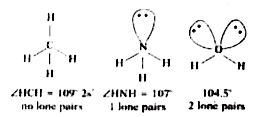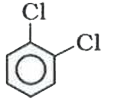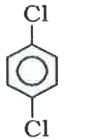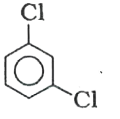Explore topic-wise InterviewSolutions in .
This section includes InterviewSolutions, each offering curated multiple-choice questions to sharpen your knowledge and support exam preparation. Choose a topic below to get started.
| 22151. |
What happens when acetonitrile is hydrolysed? |
Answer» SOLUTION :When ACETONITRILE is HYDROLYSED in the presence of acid MEDIUM, acetic acid is formed. 
|
|
| 22152. |
Which of the following condition favours the bond formation? |
|
Answer» MAXIMUM attraction and maximum POTENTIAL energy |
|
| 22153. |
Write IUPAC name for K_(3)[(Co(NO_(3))_(6)] |
| Answer» SOLUTION :POTASSIUM hexanitratocobaltate (III). | |
| 22154. |
When copper ore is mixed with silica in a reverberatory furnace copper matte is produced. The copper matte contains .................... |
|
Answer» sulphides of copper (II) and iron (II) |
|
| 22155. |
Which is more stable Fe^(2+) or Fe^(3+)? Why ? |
| Answer» Solution :`Fe^(3+)` is more stable DUE to its stable `3d^5` CONFIGURATION | |
| 22156. |
When sulphur is boiled with Na_(2)SO_(3) a compound 'A' is produced 'A' with AgNO_(3) solution gives unstable white precipitate B, which on standing turns to black C. Compound A, B and C will be respectively: |
|
Answer» `Na_(2)S_(2)O_(3),Ag_(2)S_(2)O_(3),Ag_(2)S` |
|
| 22157. |
The resistance of 0.1 N solution of a salt is found to be 2.5xx 10^(3)ohm. The equivalent conductance of the solutionis (cell constnat =1.15 cm^(-1)) |
|
Answer» `4.6` `k =(1)/(2.5xx 10^(3)) xx1.15,` `^^_(cq) =(1.15)/(2.5xx10^(3)) xx(100)/(0.1) =4.6` |
|
| 22158. |
Which of the statement is correct ? I.Melting point of alkane increases with increase of C atoms and with increase in branching. II.Boiling point of alkane increases with increase of C atoms but with decrease in branching. III.Cycloalkanes have lower boiling point than normal alkane with same numer of C atoms. IV.Alkenes have lower boiling point than same number of C atoms in alkanes. |
|
Answer» (i), (II) |
|
| 22159. |
Which compound can make fireproof clothes ? |
|
Answer» ALUMINIUM SULPHATE |
|
| 22161. |
The synthesis of 3-octyne is achieved by adding a bromoalkane into a mixture of sodium amide and an alkyne . The bromoalkane and alkyne respectively are |
|
Answer» `BrCH_2CH_2CH_2CH_2CH_3` and `CH_3CH_2C-=CH` `CH_3-CH_2-C-=C-underset"3-octyne"(CH_2)-CH_2-CH_2-CH_3` |
|
| 22162. |
Which one of the following reaction is a fractional order reaction ? |
|
Answer» `2NO+O_2rarr2NO_2` |
|
| 22163. |
When phenol reacts with which one of the following reagents ,a conjugate diketone will be formed ? |
|
Answer» `Na_2Cr_2O_7` |
|
| 22164. |
Which of the following reaction is not correct. |
|
Answer» `CH_(3)CH_(2)NH_(2)overset(HNO_(2))(to)CH_(3)CH_(2)OH+N_(2)`  p-nitrosation takes places, the product is `(CH_(3))_(N)` 
|
|
| 22165. |
What is the correct relationship between the pHs of isomolar solutions of sodium oxide (pH_(1)), sodium sulphide (pH_(2)), sodium selenide (pH_(3)) and sodium telluride (pH_(4)) |
|
Answer» `pH_(1) GT pH_(2) = pH_(3) gt pH_(4)` `Na_(2)O` is a salt of `NaOH + H_(2)O` and `H_(2)S` is least acidic AMONG given acids hence pH in this case will be `"MAX"^(m)`. |
|
| 22166. |
Which of the following statement is correct regarding following process ? (i) Cl overset(E.A.)to Cl^(-) (ii) Cl^(-) overset(I.E.) to Cl (iii) Cl overset(I.E.) to Cl^(+) (iv) Cl^(+) overset(I.E.)to Cl^(2+) |
|
Answer» |I.E. of process (ii)|=| E.A. of process (i)| [I.E. of process (II) = E.A. pf Process (I)] |
|
| 22167. |
Write notes on (a) Bond Angle (b) Bond Enthalpy (c)Bond length and (d) Bond order. |
|
Answer» Solution :a) Bond angle : The angle between the orbitals containing bonding electron pairs around the central atom in a molecule, COMPLEX ION is called bond angle. Bond angle is expressed in degrees. i) Bond angle depends on the presence of lone pair electrons with increase in the number oflone pairs the bond angle decreases. eg. in the molecules which contain four electron pairs the bond angles are follows.  ii) Bond angle decreases with increase in the electronegativity with increase in the electronegativity of central atom. eg.  iii) Bond angle depends on the hybridisation.  b) Bond enthalpy : The AMOUNT of energy required to break one mole of bonds of a particular type between two at atoms in a gaseous state is called bond enthalpy. More is the bond enthalpy, stronger the bond and more is the STABILITY of the molecule. In the case of poly atomic molecules the bond enthalpy is the average of the similar bond ENTHALPIES is taken. eg. in `H_(2)O` to break the two O - H bonds is not same. The energy required for breaking first bond is 502 kJ `mol^(-1)` and for the second bond is 427 kJ `mol^(-1)`. So the average value 464.5 kJ `mol^(-1)` is considered as the bond enthalphy. c) Bond length : It is defined as the equilibrium distance between the nuclei of two bonded atoms in a molecule. Bond length is equal to the sum of the covalent radii of two similar atom in the bond. In hetero atomic molecules the bond length can be calculated using the formula. `d_(AB)=r_(A)+r_(B)+c(X_(A)-X_(B)). " Where " X_(A) " and " X_(B)` are the electronegativities of atom A and B. The value of C depends on the nature of atoms participating in the bond. Bond lengths depend on the number of bonds between atoms, type of hybridisation etc. d) Bond order : It is defined as the number of bonds between the two atoms in a molecule. Eg : Bond orders in `H_(2)` is 1, `O_(2)` =2 and `N_(2)` = 3. In the resonance hybrid the bond order `="No. of bonds around the central atom"/"No. of atoms around the central atom"` In cyclic compounds, the bond order is `="No. of bonds in the ring"/"No. of atoms forming the ring"` Isoelectronic molecules and ions have identical bond orders. e.g. `F_(2) " and " O_(2)^(2-)` have bond order 1. `N_(2)`, CO and `NO^(+)` have bond order 3. More the bond order more is the bond enthalpy, lesser the bond length, more the stability. |
|
| 22168. |
The standard state Gibbs free energies of formation of C (graphite) and C(diamond) at T=298 K areDelta_(f)G^(@)[C("graphite")]=0kJ mol^(-1)Delta_(f)G^(@)[C("diamond")]=2.9 kJ mol^(-1)The standard state means that the pressure should be 1 bar, and substance should be pure at a given temperature. The conversion of graphite [C (graphite)] to diamond [C(diamond)] reduces its volume by 2xx10^(-6) m^(3) mol^(-1). If C (graphite) is converted to C (diamond) isothermally at T = 298 K, the pressure at with C (graphite) is in equilibrium with C (diamond), is[Useful information : 1J=1kg m^(2)s^(-2), 1Pa=1kg m^(-1)s^(-2)," 1 bar = "10^(5) Pa] |
|
Answer» <P>58001 BAR `therefore dG=VdP` `underset(1)overset(P)intdG=underset(1)overset(P)intVdPtherefore G-G^(@)=V(P-1)""[because " Solids involved"therefore" V ALMOST constant"]` `therefore Delta_(r)G=[G_("diamond")^(@)+V_(d)(P-1)]-[G_("graphite")^(@)+V_(g)(P-1)]` `0=2.9xx10^(3)+(P-1)10^(5)(-2xx10^(-6))""thereforeP=14501 " bar"` |
|
| 22169. |
Which metal can't be obtained from electrolysis |
|
Answer» Cu |
|
| 22170. |
The relationship between osmotic pressure at 273 K when 10 g glucose (P_1), 10 g urea (P_2) and 10 g sucorse (P_3) are dissoved in 250 ml of water is |
|
Answer» `P_1 GT P_2 gt P_3` |
|
| 22172. |
What is esterificatioin? Explain with equation. |
|
Answer» Solution :Alcohols react with CARBOXYLIC ACIDS in the presence of an ACID to give ESTERS. This reaction is nown as ESTERIFICATION. `underset("Ethanol")(CH_3-CH_2-OH)+underset("Ethanoicacid")(OH-overset(O)overset(|)C-CH_3)underset(-H_2O)overset(H^(+))tounderset("Ethyl ethanoate")(CH_3-overset(O)overset(||)C-O -CH_2 - CH_3)` |
|
| 22173. |
What is pyrometallurgy ? |
|
Answer» CALCINATION of the ore |
|
| 22174. |
What are biodegradable polymers ? |
| Answer» Solution :POLYMERS which distintergrate by themselves over a period of time either by enzymatic hydrolysis or by bacterial degradation or oxidation in environment are called biodegradabic polymers. For examole , all biopolymers (POLYSACCHARIDES, proteins , nucleic acid), and some synthetic polymers such as POLY-`beta`-hydroxybautyrate -co-`beta`-hydroxyvalerate (PHBV), poly (glycollic acid) ply (lactic acid), i.e., dextron, nylon -2-nylon -6,ETC. | |
| 22175. |
Write the reactions involved in the preparation of : (a) Teflon (b) Orlon (c) PVC |
|
Answer» SOLUTION :(a) N/A (B) N/A (C) POLYVINYLCHLORIDE (PVC) : 
|
|
| 22176. |
When a brown compound of manganese (A) is treated with HCl it gives a gas (B). The gas taken in excess, reacts with NH_(3) to give an explosive compound (C ). Identify compounds A, B and C |
|
Answer» Solution :`A: MnO_(2) " " B: Cl_(2) " " C: NCl_(3)` (explosive) `underset((A))(MnO_(2)) + 4HCL rarr MnCl_(2) + underset((B))(Cl_(2)) + 2H_(2)O` `NH_(3) + underset(("EXCESS"))(3Cl_(2)) rarr underset((C ))(NCl_(3)) + 2HCl` |
|
| 22177. |
Which will be adsorbed more readaly on the surface of chrcoal and why -NH_(3)or CO_(2) ? |
| Answer» Solution :`NH_(3)` has higher CRITICAL temperature that that of `CO_(2),` i.e., `NH_(3)` is more EASILY LIQUEFIABLE than `CO_(2).` Hence, `NH_(3)` has greater intermolecular forces of attraction and hence will be adsorbed more READILY. | |
| 22179. |
When ice melts to form liquid water at 0^(@)C, there is a contraction in volume . This is due to |
|
Answer» the MOLECULES contracting in size |
|
| 22180. |
When a solution is separated from a solvent by semipermeable membrane, then phenomenon taking place is called as: |
|
Answer» Osmosis |
|
| 22181. |
The secondary valence of Pt^(4+) is six. Calculate the number of moles of AgCl participated, when axcess of AgNO_3 solution is added to 2L of 0.1 M PtCl_4 . 4NH_3 solution. |
|
Answer» Solution :Secondary valence of `Pt^(4+)` is six it will be satisfied by four `NH_3` and two `Cl^(-)` ions. The remaining two `Cl^(-)` ion satisfy only PRIMARY valence. `PtCl_4 . 4NH_3` can be WRITTEN as `[Pt(NH_3)_4Cl_2]Cl_2`. One mole of this complex GIVES 2 moles of chloride ions in the aqueous solution. NUMBER of moles of complex present in 2L of 0.1 M`PtCl_4 . 4NH_3 = M xx V = 0.1 xx 2 = 0.2`. Number of mole of chloride ions present in 2L of `0.1 M PtCl_4 NH_3` solution `=2 xx 0.2 = 0.4` Number of moles of AgCl precipitated from 2L of `0.1 M PtCl_4 . 4NH_3` is 0.4. |
|
| 22182. |
Which is an example of a heterogeneous catalysis ? |
|
Answer» FORMATION of `SO_3` in the chamber process |
|
| 22183. |
The reverse of fusion is freezing and it is |
|
Answer» endothermic |
|
| 22184. |
When primary alcohol is oxidised with chlorine , it produces |
|
Answer» `HCHO` Oxidation will occur with chlorination of methyl group. |
|
| 22185. |
Write down the reactions taking place in different zones in the blast furnace during the extraction of iron. |
|
Answer» Solution :The reactions taking place in different zones of BLAST furnace are : (i) Zone of combustion : Coke burns near the tuyeres to form carbon dioxide. `C+O_(2) to CO_(2), triangleH = -393.3kJ` Temperature in this zone is around 2170K. (ii) Zone of heat absorption : Coke present in the charge reduces `CO_(2)" to "CO`. `CO_(2) +C to 2CO, triangleH = +163.2 kJ` Since this REACTION is endothermic, the temperature gradually falls to 1423K. (III) Zone of slag formation : In region, limestone decomposes to form CaO and `CO_(2.CaO` formed acts as flux and combines with SILICA to form slag. `{:(CaCO_(3) to CaO(s)+CO_(2)(g)),(CaO+SiO_(2)to CaSiO_(3)),("Calcium silicate "),("(slag) "):}` The temperature here is around 1123 K. (iv) Zone of reduction : The following reactions take place in this zone : `{:(Fe_(2)O_(3)+CO overset(823K)(to)2FeO+CO_(2)),(Fe_(3)O_(4)+CO overset(823K)(to)3FeO+CO_(2)):}` Further, reduction of `FeO" to "Fe` by CO occurs at 1123 K `FeO+CO overset(1123K)(to)Fe+CO_(2)` (v) Zone of fusion : Temperature here is in between 1423K - 1623K. Spongy iron melts and dissolves some C, S, P, Si, Mn, etc. `CaSiO_(3)` slag also metls in the region. Both the molten slag and molten iron trickle down into hearth where they form two layers. Molten slag `CaSiO_(3)` being lighter forms the upper layer while molten iron being heavioer forms the lower layer. |
|
| 22186. |
Which statements is/are correct about osmotic pressure (P), volume (V) and temperature (T)? |
|
Answer» <P>`P propto 1//V` if T is CONSTANT |
|
| 22187. |
The system N_(2)O_(4)hArr 2 NO_(2) maintained in a closed vessel at 60° C & a pressure of 5 atm has an average (i.e. observed) molecular weight of 69, calculate K_(p). At what pressure at the same temperature would the observed molecular weight be (230/3) ? |
|
Answer» <P> SOLUTION :`K_(p) = 2.5 ATM, P = 15 atm` |
|
| 22188. |
What happens to the energy of activation of a reaction when positive catalyst is added. |
| Answer» SOLUTION :ENERGY of ACTIVATION DECREASES. | |
| 22189. |
Two liquids X and Y form an ideal solution. The mixture has a vapour pressure of 400 mm at 300 K when mixed in the molar ratio of 1:1 and a vapour pressure of 350 mm when mixed in the molar ratio of 1: 2 at the same temperature. The vapour pressures of the two pure liquids X and Y respectively are |
| Answer» Answer :D | |
| 22190. |
Which is the IUPAC name of CH_(3)-underset(C_(2)H_(5))underset(|)overset(C_(2)H_(3))overset(|)C-CH_(2)Cl |
|
Answer» 1-chloro-2, 2-diethylpropane |
|
| 22191. |
Which of the following is more ionic hydroxide ? |
|
Answer» `Eu (OH)_(3)` |
|
| 22192. |
When 2-propanol is treated with red phosphorus and bromine gives |
|
Answer» 1-bromo PROPANE and `H_(3)BO_(3)` |
|
| 22193. |
The set representing the correct first ionisation energies (IE_1) is: |
|
Answer» `KgtNagtLi` |
|
| 22194. |
Which of the following is the most suitable drying agent for ammonia gas ? |
|
Answer» CaO |
|
| 22195. |
The thermal stability of alkaline earth metal carbonates MgCO_(3),CaCO_(3),BaCO_(3) and SrCO_(3) decreases as: |
|
Answer» `BaCO_(3)gtSrCO_(3)gtMgCO_(3)` |
|
| 22197. |
Which is low spin complex: |
| Answer» Answer :A | |
| 22198. |
What will be the basicity of an acid, if 2 moles of it requires 400 mL of 5N KOH for complete neutralisation? |
|
Answer» 1 `impliesH_n A ` forcompleteneutralisation eqof acid`= EQ `of base noofeq `= n xx n `o ofmole`=N xx V`( bydefinition) ` 2xx n = 400 xx 10^(-3)xx 5 implies n=1 ` |
|
| 22199. |
What will happen when copper spon is used to stir a solution of aluminium nitrate / |
|
Answer» The spoon will get COOLED with aluminium |
|
| 22200. |
What is meant by the term ''coordination number'' ?What is the coordination number of atoms in a bcc structure ? |
|
Answer» Solution :(i) COORDINATION number : The number of nearest neighbours that surrounding a particle in a crystal is CALLED the coordination number of that particle. (II) Coordination number of atoms in a bcc structure is 8 |
|



